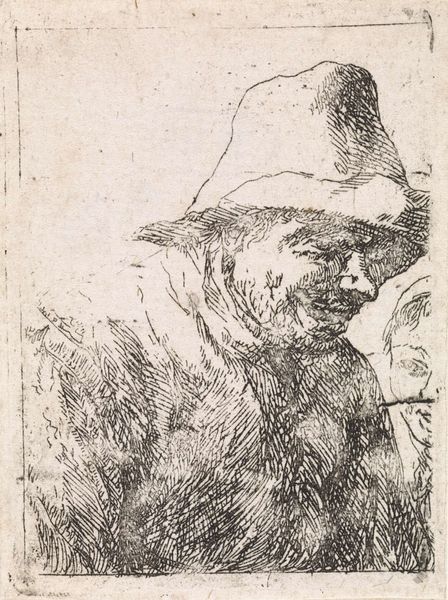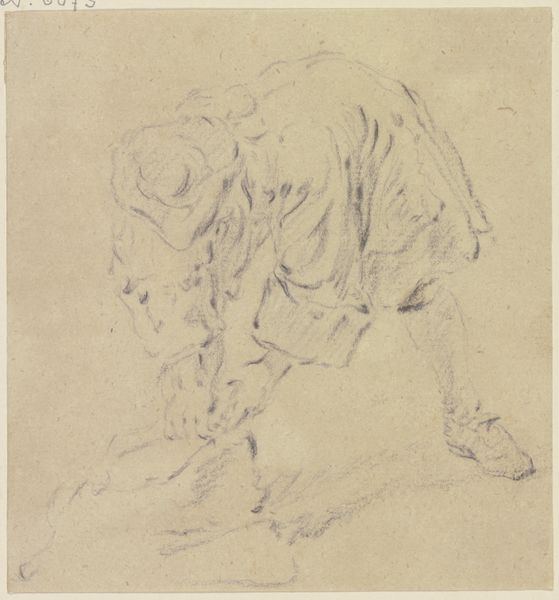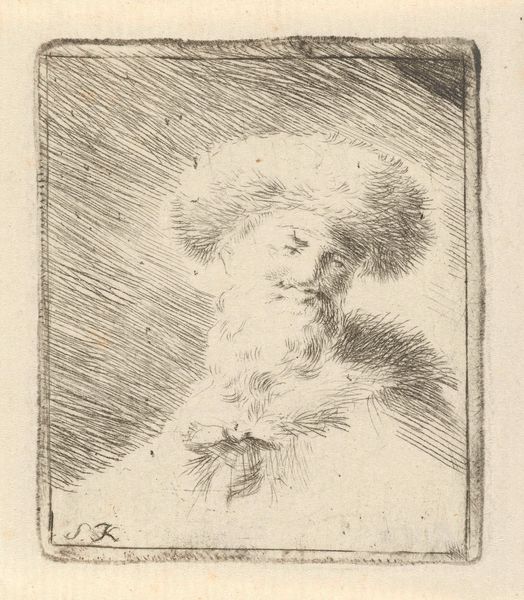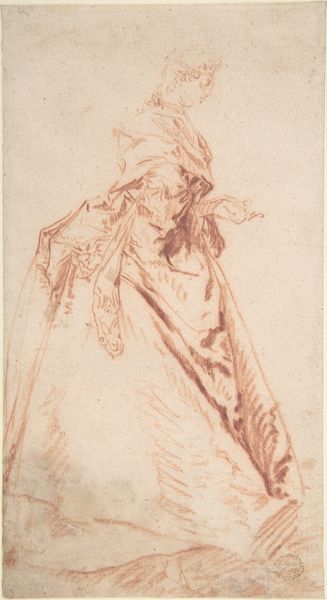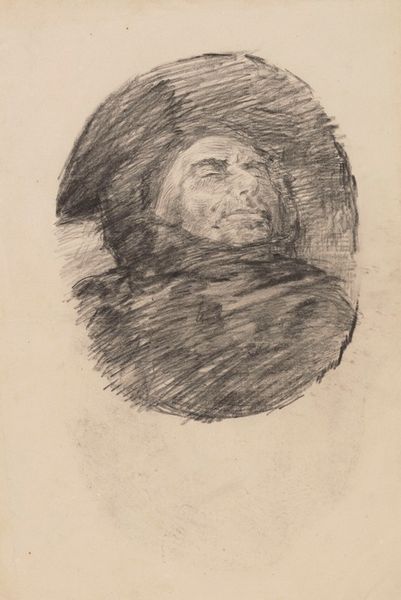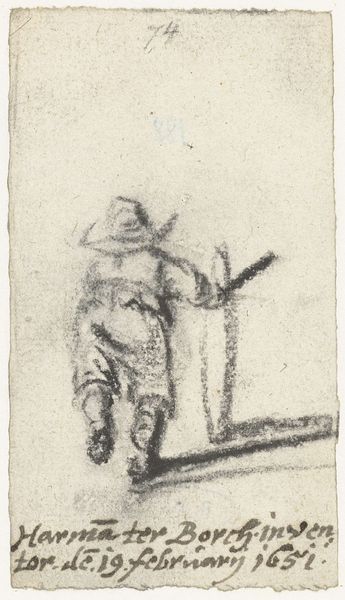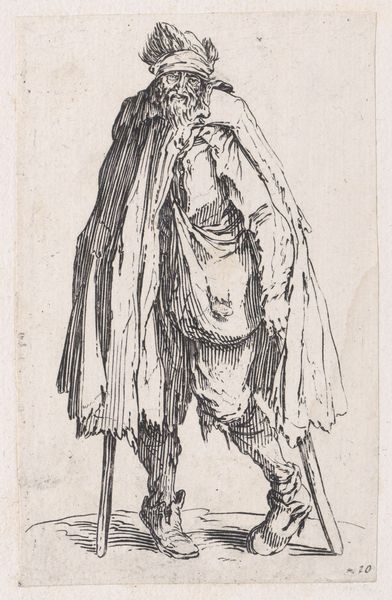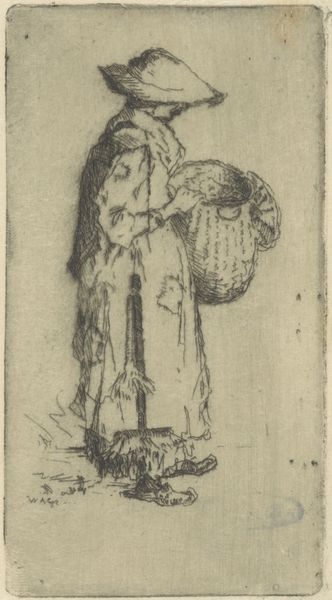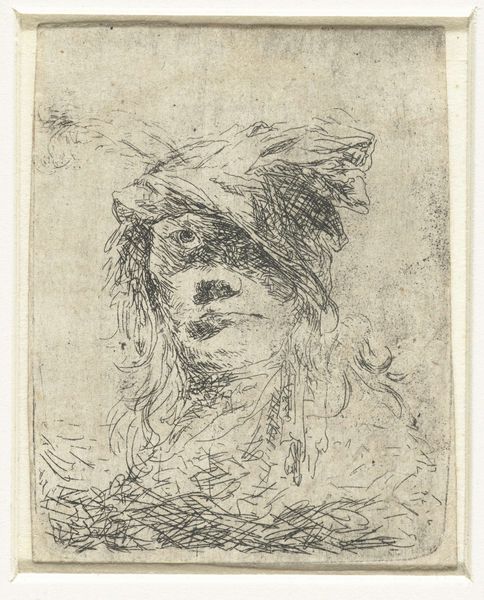
drawing, print, etching, dry-media
#
portrait
#
drawing
# print
#
etching
#
dry-media
#
genre-painting
Dimensions: 6.0 x 4.5 cm
Copyright: Public Domain
Editor: Here we have an etching and drypoint print entitled "Head of a Peasant," made sometime between 1610 and 1677 by an anonymous artist. I find the figure rather compelling and I am drawn to his almost smug demeanor, a face that seems to tell a story. What can you tell me about it? Curator: The portrait offers a window into the social dynamics of its time, prompting critical engagement with power and representation. The image, like others of its kind, participates in the historical objectification and stereotyping of the peasantry. In that period, these portrayals, circulated widely through prints, often reinforced existing class structures and prejudices. Why do you think the artist chose this subject? Editor: Maybe it was just about capturing a "type" of person, a genre scene rather than an individual portrait. Was there some fascination for the lower classes by artists at that time? Curator: Indeed, such works could function as records of social classes and sometimes offer social commentary. To see art history this way encourages viewers to reflect on the ways in which marginalized groups have been depicted and to question the intentions and biases of the artists and patrons involved. Editor: I see... It becomes an interesting, critical exercise in thinking about the lives of working-class people back then. I definitely never would have considered the power dynamics involved in simply drawing a peasant's face. Thanks. Curator: Thinking about art as embedded in historical and social contexts, we come to perceive it as not neutral or apolitical. That is one way art offers lessons for our contemporary moment.
Comments
No comments
Be the first to comment and join the conversation on the ultimate creative platform.
